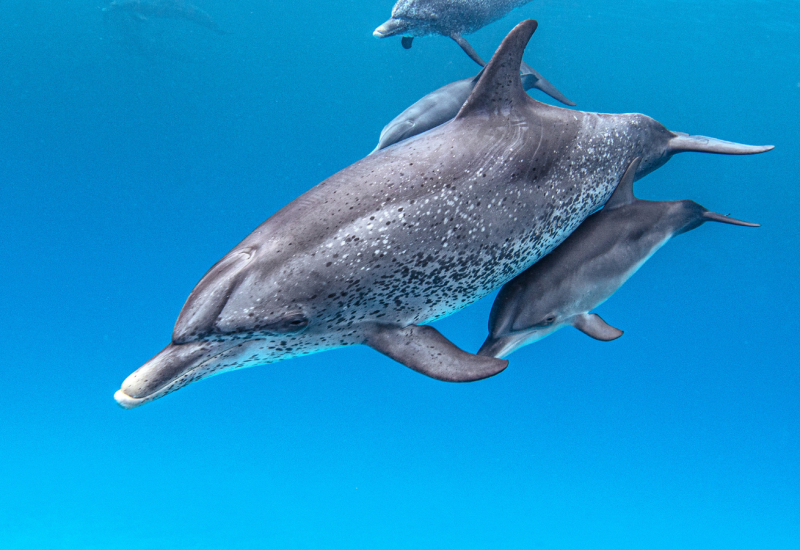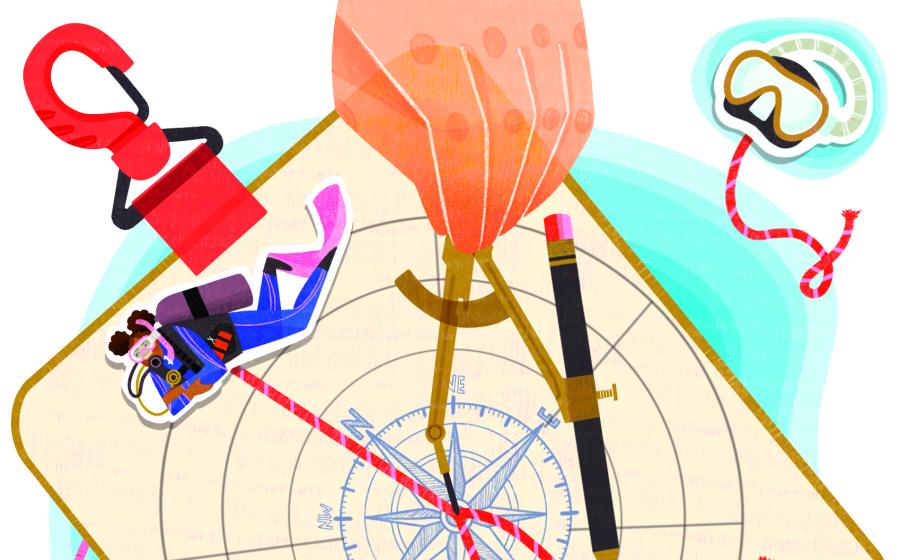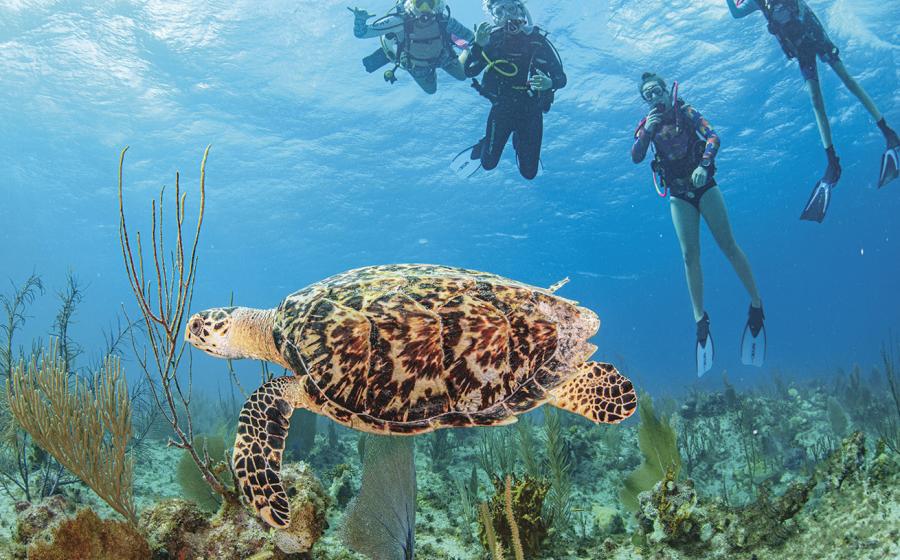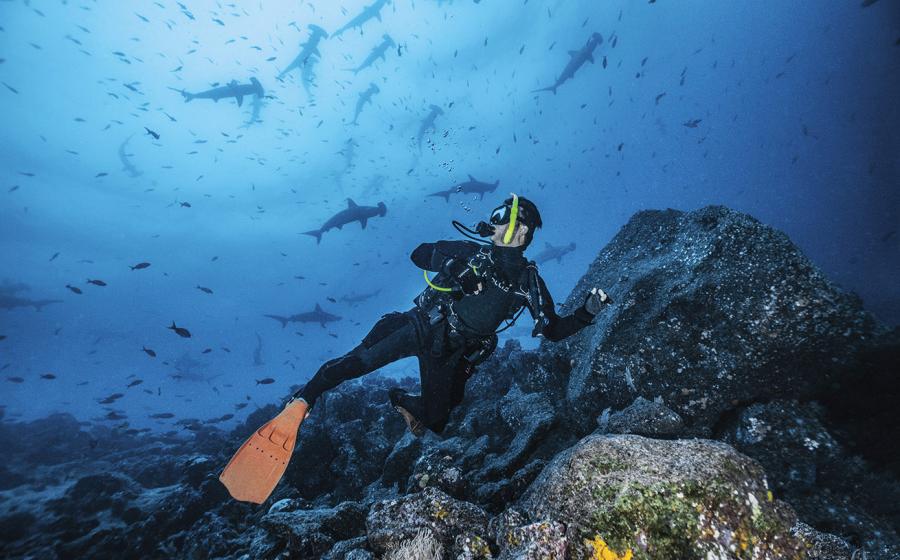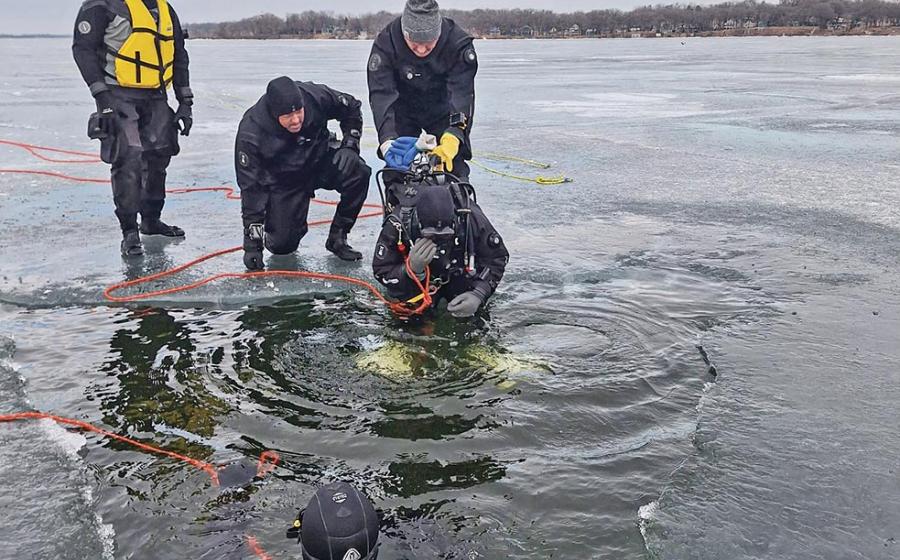Scuba Diving among the Sharks on the Wrecks and Reefs of the Bahamas
Diving off New Providence Island in the Bahamas offers big-time thrills with sharks, wrecks and shallow reefs
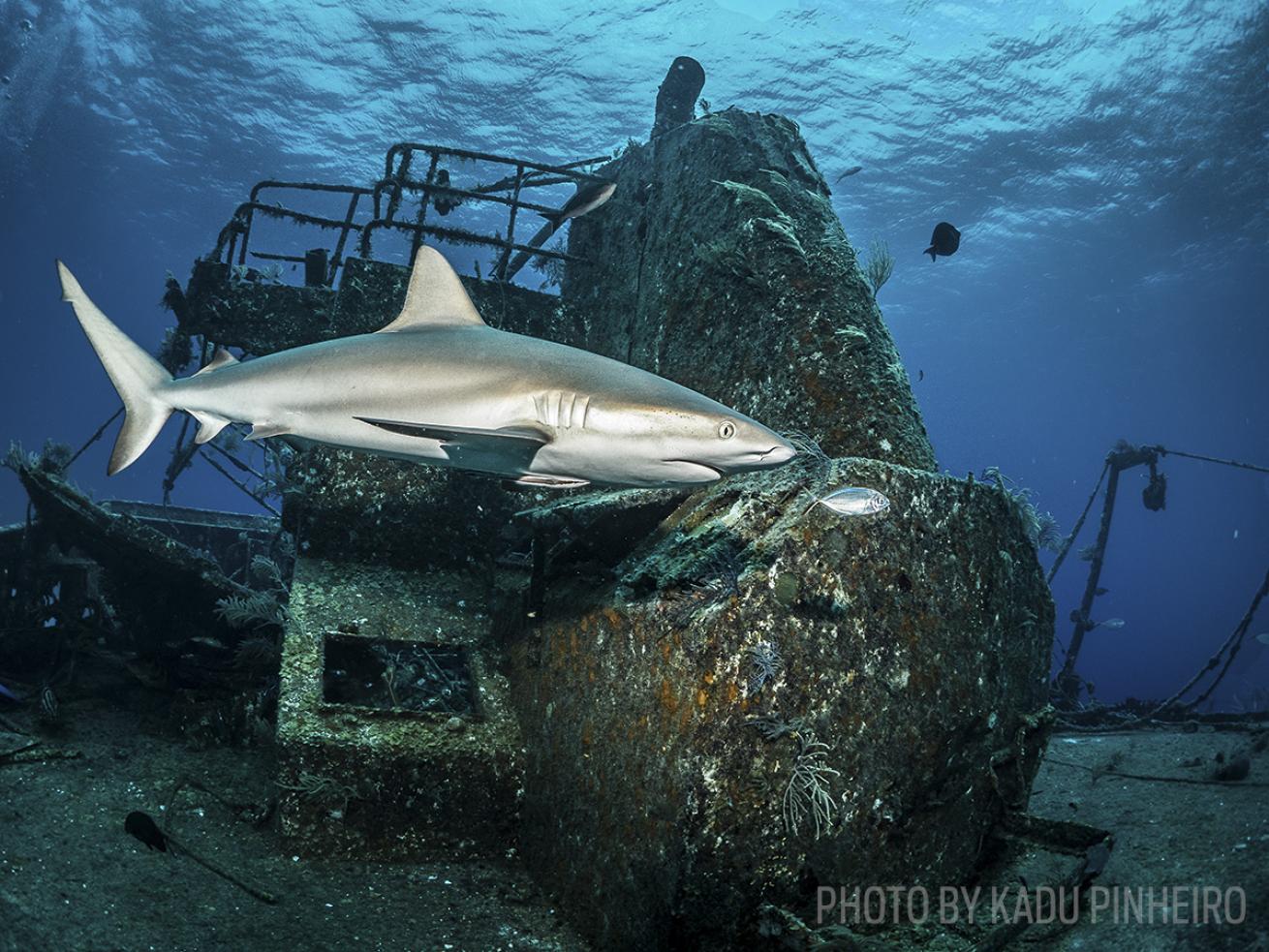
Kadu PinheiroA shark cruises around the Ray of Hope
If you’d asked me three years ago to get in the water with a shark, I would have laughed in your face.
Loudly.
Don’t get me wrong. I’ve always been fascinated by the primordial mystique of sharks — but I preferred to appreciate them at a safe distance. And yet, I’ve come to Nassau specifically to dive in shark-infested waters. Go big or go home, right? Across the dinner table from me, freediving guru and instructor Liz Parkinson, acclaimed videographer Frazier Nivens and Stuart Cove himself are swapping stories about their most epic shark encounters. “The tiger we saw yesterday was massive — such a beauty!” Parkinson says. “I’m stoked to freedive with her again.” Cove and Parkinson are both experienced shark feeders, and Nivens has spent the past few months getting up-close footage of tiger sharks, oceanic whitetips, reefies, hammerheads and a host of other species. “We’ve seen a lot of tigers lately. Have you dived with tiger sharks before?” Nivens asks, turning toward me. Gulp. “I’ve never seen a shark before,” I say, sheepishly admitting to being a bit nervous. I expect laughter, or concern at my response. But instead, Cove gives me a thousand-watt smile and says, simply: “Well, you came to the right place.”

Eddy RaphaelSea fans decorate Southwest Reef in the Bahamas
TESTING THE WATERS
The collective 700 islands of the Bahamas are known for their resident sharks — from Tiger Beach to the hammerheads of Bimini and reef sharks anywhere there’s water — but I made the hour-long flight from Orlando to New Providence Island to dive with the shark wranglers at Stuart Cove’s. The dive shop has built a reputation for being the best of the best in shark diving for 40 years, and their expertise draws Shark Week videographers, A-list celebrities and filmmakers who are in need of toothy video footage.
Stuart Cove’s Dive Bahamas is perfectly placed on the southwest tip of the island, providing quick and easy access to more than 30 local dives. Thanks to the massive Tongue of the Ocean trench and the nutrient-rich currents flowing from both sides of the island, New Providence is blessed with an array of healthy corals. Our first taste of the local flavor is at sun-kissed Southwest Reef, a fringing mass of corals just 6 miles from the dive shop.
READ MORE: The Best Shark Diving Around the World
“There’s a lot to see here because the reef extends in so many fingers,” Parkinson says as we gear up on the boat. “We’ve had divers ask to come back here for days in a row because each finger reef has something new to see.”
Stuart suggests we cover more ground to make the most of our bottom time — which is significant because the reef’s max depth is barely 30 feet — and opt to explore on diver-propulsion vehicles.
We fly through the crystal-clear water over massive tables of elkhorn coral so beautiful that I have to circle back for a closer look. I’m lingering, but I can’t help it. Each coral head is commanding my attention, and I am delighted to spot a starfish hiding among the critters.
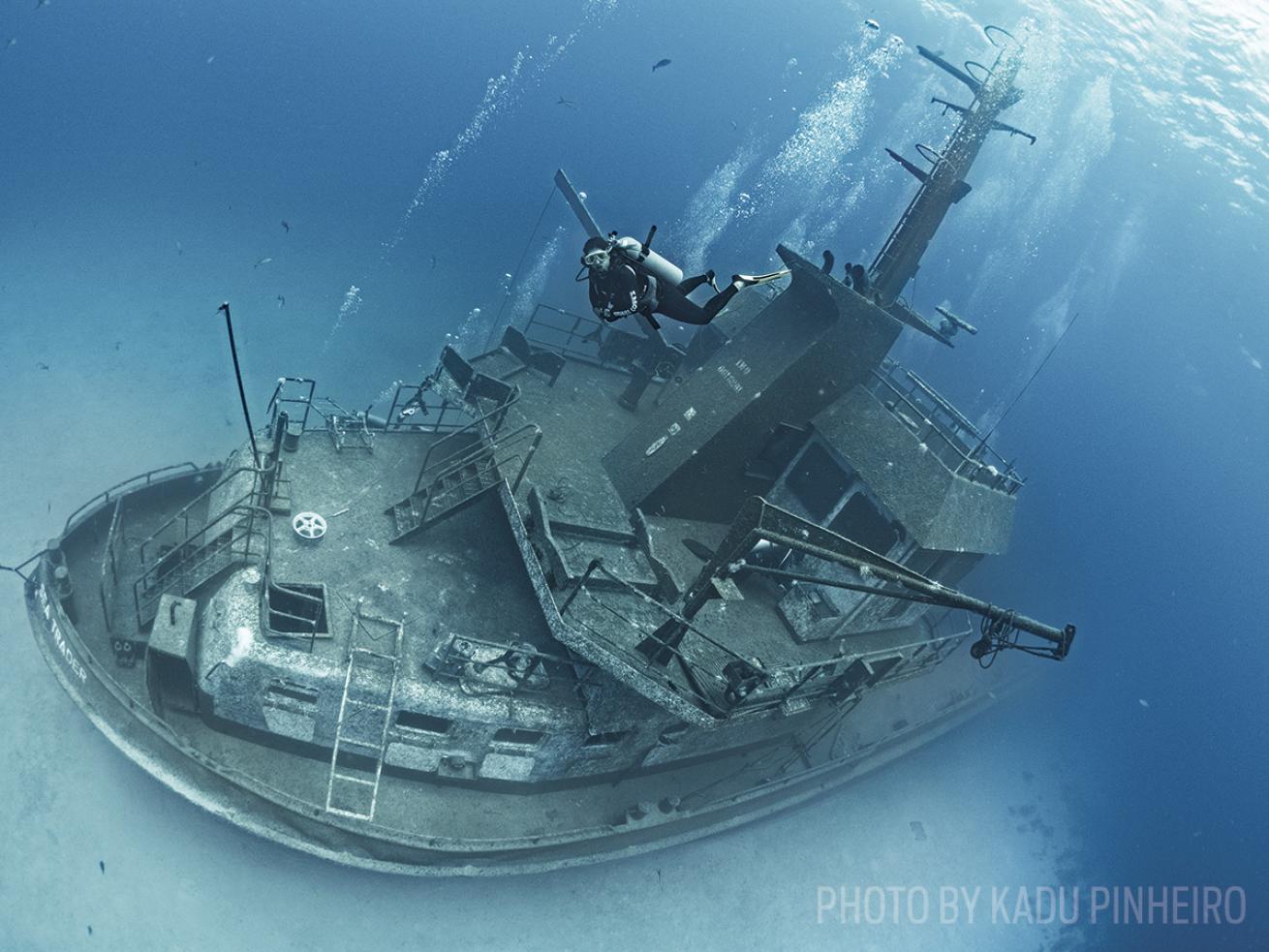
Kadu PinheiroThe Sea Trader was purpose-sunk by the Stuart Cove’s team off NPI’s southwest coast in 2014.
When it’s time to surface, we return to the boat and head for Orange Bowl — another garden of coral blooming from the Tongue of the Ocean.
“Orange Bowl is one of my absolute favorite sites,” Cove tells us as we cruise on the dive boat Tursiops .
Aptly named for the bright orange coral heads that pepper the seabed, Orange Bowl does not disappoint. Accenting the orange sponges and coral heads are black-coral outcrops, vibrant yellow tube sponges and delicate purple sea fans. And to top off the kaleidoscopic effect, we see schools of oceanic triggerfish, blue tangs, an assortment of grouper species and a couple of barracuda.
At each of the sites, we’re treated to a rainbow of reef fish — yellow-and-purple fairy basslets, gray and queen angelfish, foureye butterflyfish and chromis — as we weave in and out of the diverse coral formations. But Razorback brings all that — and more.
SEE MORE: The 50 Greatest Dive Sites in the World
Razorback Wall — our deepest reef dive at 40 to 70 feet — is situated on the cusp of the plummeting trench and was simply buzzing with life when we arrived. Because of its location, Razorback is susceptible to strong currents on occasion, but that wasn’t the case this morning. Instead, we descend easily on the mountains of coral covering this site, taking time to glance into the blue every now and then. As mesmerizing as the coral can be, we were instructed to keep our eyes peeled.
I paused a moment to take it all in: The corals carpeted the site, bulging in mountains at the shoulder of the drop-off. And the grouper. And the sea turtle. And the shark … and the shark!
As I moved away from the coral head, I caught my first glimpse of the famous fish, free swimming along the wall. I tried to get closer, with Cove close to my side, but the reef shark had already made its exit, and despite my furious kicking, I couldn’t possibly keep up. But at least I saw it. One down, and I hoped a lot more to go.
INTO THE BLUE
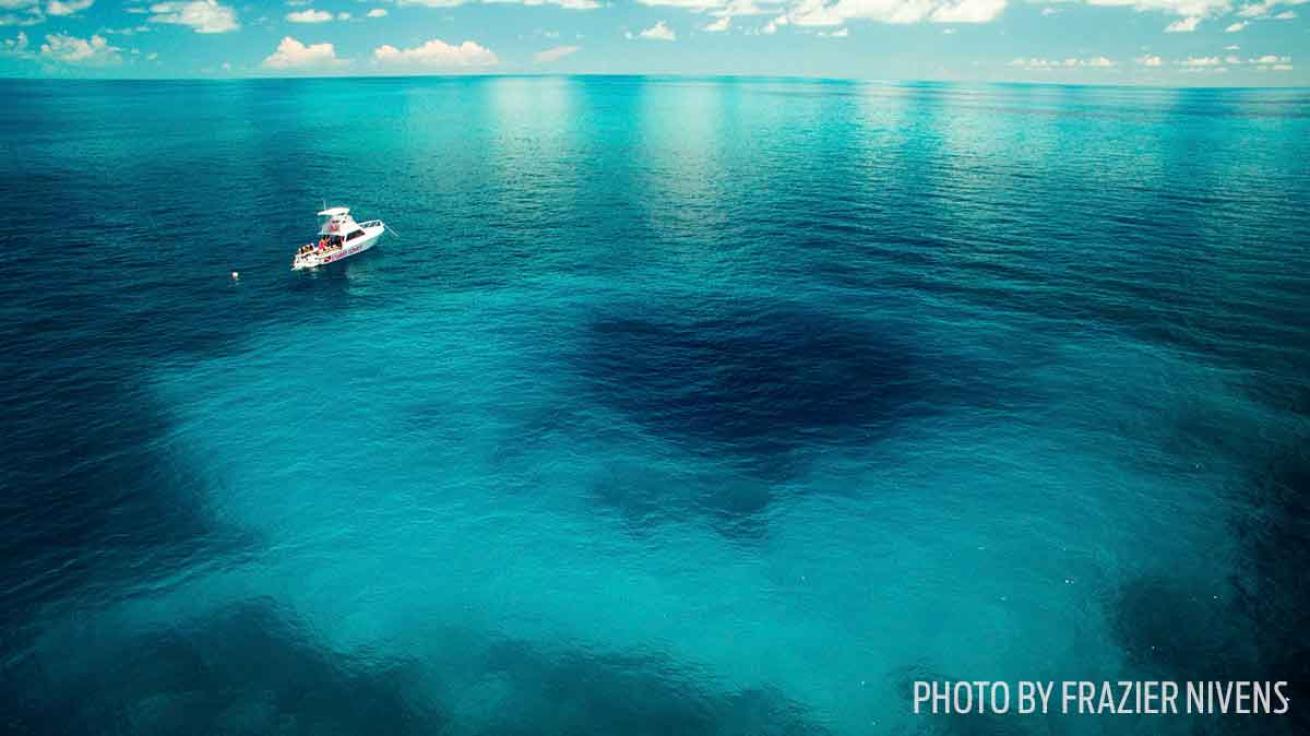
Frazier NivensThe depths of a blue hole are visible from the sky.
The next morning, we head out on Tursiops to explore Nassau’s blue hole. The dive site is located on the east side of the island, and all I could think about during the hour-long boat ride was how excited I was for the my next shark encounter.
We’ve planned two dives for this excursion: our first tank to explore the blue abyss and the second to engage with sharks on its sandy-bottomed edge.
We fin above outcrops of hard corals on our route to the drop-off, and I’m almost disappointed when we don’t linger to watch the grouper and angelfish we pass along the way.
But as soon as we reach the edge of the blue hole, I’ve forgotten about them entirely. Because all I can see is a wall of sharks. Hundreds of sharks! I’m enthralled by them, wide-eyed as I watch them gliding seamlessly along the circumference of the blue hole. They seem so small — nothing like the Caribbean reef shark I’d met previously — so I assume that their circling pattern is well below us. It’s not.
These are Atlantic sharpnose sharks, which look like miniature reefies, and they are too invested in their hypnotic ritual to pay us divers much mind. From July through September every year, the sharks aggregate inside the blue hole, in what Parkinson hypothesizes as either a mating or feeding habit — or perhaps a combination of the two.

Kadu PinheiroA lobster peeks out of its coral-covered home.
It’s clear that we’ve interrupted whatever the ritual might be; the sharpnose sharks make a clear path for us as we descend slowly into the hole on the rocky wall. There’s a massive crevice at 60 feet, and Nivens and Cove are waiting, eagerly gesturing toward the lobster they spotted just inside.
After taking a quick look around, it’s time to return to the boat and swap tanks.
We have a date with even more sharks, and I certainly don’t want to stand them up.
After a brief surface interval, we’re back in the water on the edge of the blue hole. A coral barrier separates us from the drop-off, and I can see that the sharpnose sharks are back to their circulation. Cove grabs a fish from the bait box, and it’s not long before we’re greeted by a nurse shark eager to score a snack.
MORE: The Best Dive Destinations for Beginners
The nurse shark is joined by a few Caribbean reef sharks, but the sharpnose sharks pay no mind to the dinner bell — they’re not interested in socializing, even if it means a free meal. But now I’ve forgotten about them, because a beautiful 5-foot Caribbean reef shark has decided to spend time with us, and I can’t take my eyes off the sleek apex predator as it makes its way around us, trying to determine the most effective way to grab a bite.
One reef shark becomes two. Then three. Then four, as Cove masterfully hand-delivers tasty morsels into their open jaws until the bait box is empty. As they depart and we begin our ascent to the boat, I feel like a kindred spirit with these beautiful creatures. I’d had my first taste of shark-feeding encounters, and that’s all it took.
I was addicted to the rush of those dives and couldn’t wait to get my next fix.
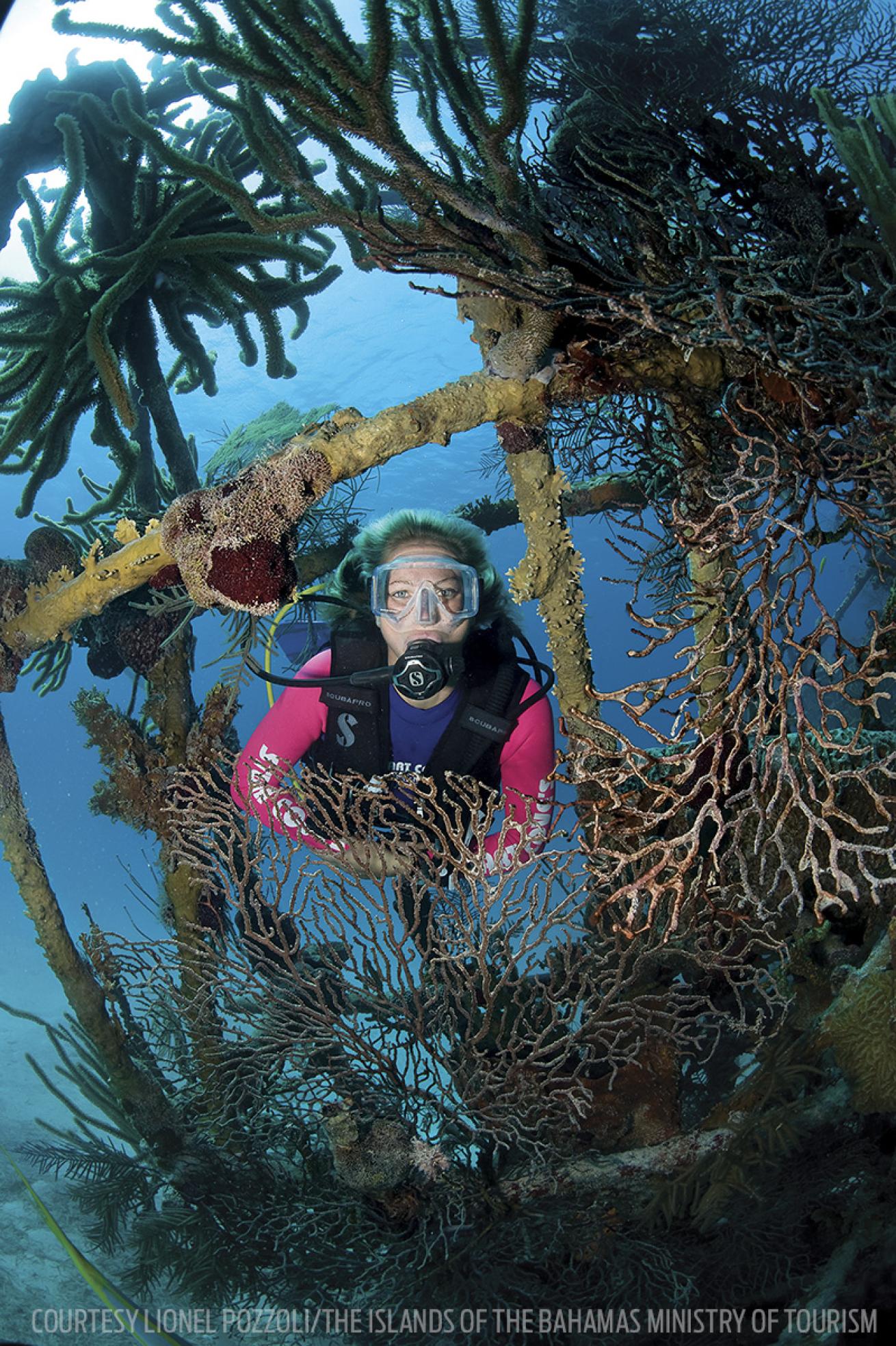
Courtesy Lionel Pozzoli/The Islands of the Bahamas Ministry of TourismA diver ventures into the Vulcan Bomber.
BOND WRECKS
“People come from all over the world specifically to see these wrecks,” Parkinson says. “Many of them haven’t dived before; they take the Discover Scuba Diving course to see the Bond wrecks.”
She’s talking about the Tears of Allah and Vulcan Bomber, two of the biggest celebrities in the Bahamas. What’s better is that you can dive both of the wrecks with a single tank.
First, we descend on the Tears of Allah, which was a prop for the 1983 Sean Connery Bond film Never Say Never Again. There’s no international espionage going on here today, but the ship is teeming with marine life and covered in corals from top to bottom.
Then we fin over to the Vulcan, from the 1965 film Thunderball, which ranks among the most popular Bond films of all time — especially for divers.
“They weren’t able to sink a plane for the Bond film, so they used this scaffolding for the underwater scenes instead,” Cove says of the Vulcan. “But now all that’s left is the frame.”
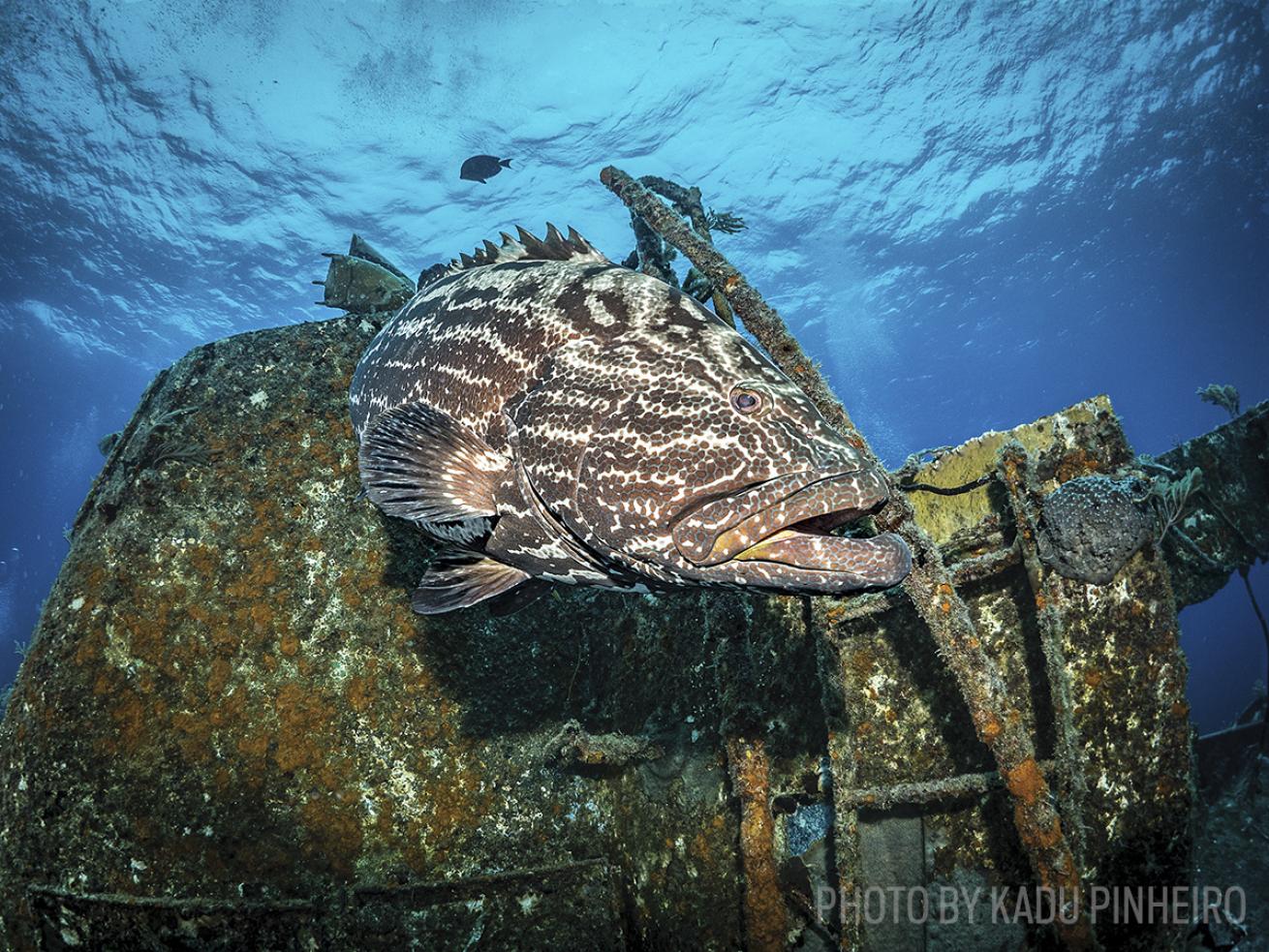
Kadu PinheiroA Nassau grouper explores the Ray of Hope.
The structure, or lack thereof, gives the site the look and feel of an underwater jungle gym. And while climbing the structure is certainly not an option, weaving in and out of the coral-covered chassis is way more fun than romping on a playground. Fire corals abound on the existing structure, Mother Nature’s way of protecting the famous architecture. Among the sponges, gorgonians and sea fans, butterflyfish flit to and fro, enticing us to follow them through the open-space structure of the wreck. One particularly friendly gray angelfish did not ignite a chase but instead greeted Parkinson and me nearly face-to-face, quizzically finning around the bubble-blowing strangers who invaded its home.
While they might be the most famous wrecks around the island, the Bond wrecks are certainly not the only ones. In fact, Cove and his team have downed more than 20 ships, either to make films or reefs. One of the newest additions to the list is the Sea Trader. The 250-foot oil tanker was donated to Stuart Cove’s team by its owner, who used the vessel to deliver oil around the Caribbean. Because the wreck is still young, the reef is only beginning its development. But on the ship’s deck, we find snapper and a colorful queen angelfish waiting for us.
After nearly an hour exploring these wrecks, I can think of only one thing that would make them better — that would be big fish of the shark variety.
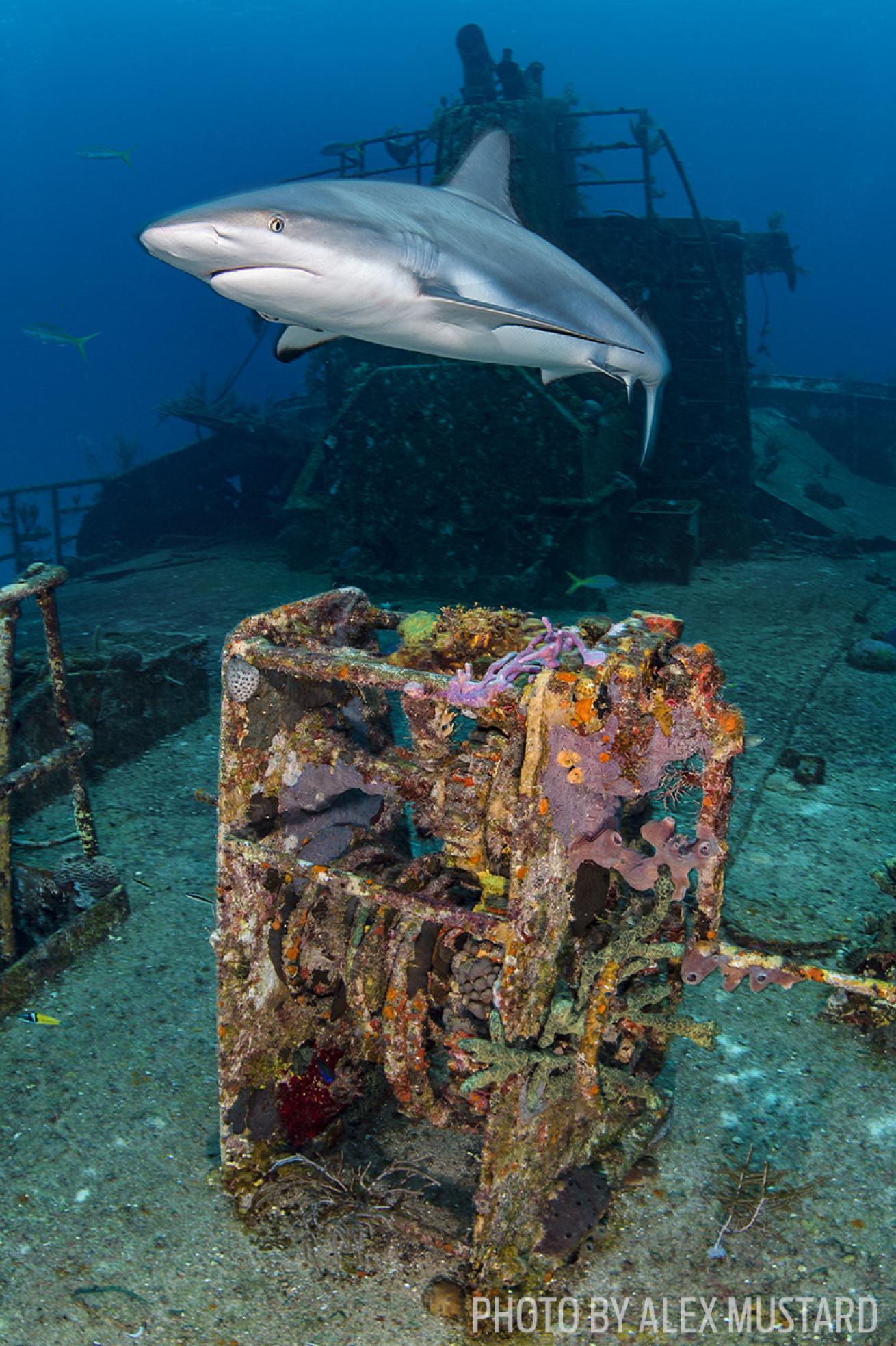
Alex MustardA Caribbean reef shark cruises over the Ray of Hope.
SHARKS, ALL THE SHARKS
Stuart Cove’s Dive Bahamas has two primary locations for its shark feeds: the sandy bottom circle called Shark Arena well south of the island and the Ray of Hope. The conditions were right, so we took off on the boat to check out the wreck.
Parkinson, our feeder for this dive, is the first to dive in — pink bait box in hand.
I can feel the stoke coming on.
Our divemaster for the week, Andrea (or Saint Andrea, as I call him), gives us the signal, and the rest of us descend to the bow of the boat. This is it!
I’d gotten a taste of sharks earlier this week, but this was a feast of epic proportions. Before Parkinson even gets into position, I look up and notice a few reef sharks hanging above us. They know the drill, and they’re not going to miss out on dinner.
As I hold on to the railing, Parkinson expertly grabs the first fish from the box, delivering it into the mouth of a beautiful Caribbean reef shark. The shark passes by me, close enough that I could touch it, but I don’t. I’m under strict instruction to keep my hands close to my body. Not because the sharks care anything about me, but rather to avoid confusion.
In minutes, we’re surrounded. I try to keep count as the sharks glide around me, but it’s not easy. They’re coming from every direction, and I’m relishing my front-row seat.
Massive grouper and a handful of nurse sharks have also joined the ever-growing party, but I’ve got tunnel vision for the toothy sharks that are enjoying their snack. I’m simply awestruck, and I keep hoping that time is moving at a snail’s pace because I don’t ever want this magical experience to end.
I’m still buzzing once we’ve returned to the boat, and Cove, Parkinson and Nivens laugh as I chatter excitedly, detailing every minute of our bottom time. This is the moment, my epic shark encounter.
Now, if I’m ever shooting the breeze with fellow divers and shark stories start to fly, I won’t have to sit in silence. Cove was right: I came to the right place.
DIVERS GUIDE TO THE BAHAMAS

Kadu PinheiroHorse-eye jacks school off the Bahamian coast.
Getting there: New Providence Island is located 179 miles southeast of Miami, Florida, which equates to a roughly 45-minute flight from MIA. Flights to and from Nassau are available daily.
When to go: Diving is excellent year-round, but Atlantic sharpnose sharks aggregate from June through August. July is typically the warmest month, but the average temperature from March to October is well above 80 degrees F. January is the coldest month, with temperatures dropping to the 70s. June through October tends to see the most rain.
Water temperature: The average water temperature is 80 degrees F year-round. Temperatures warm from May through October, with the coldest temperatures in January.
Average visibility: 80 to 100 feet year-round
What to wear: In the summer months, a shorty or 1 mm fullsuit should be more than enough to stay warm. In the winter months (or if you’re prone to getting cold) a 3 mm or 5 mm wetsuit is recommended.
Dive operator: Stuart Cove’s Dive Bahamas; stuartcove.com
For more info: Go to sportdiver.com/bahamas
Where the Stars Go to Dive
The reefs and wrecks off New Providence Island have attracted plenty of A-list bubble blowers
Tiger Woods

Tribune Content Agency LLC/AlamyTiger Woods
The golf legend has been known to explore the waters by his NPI home. Why? “The fish don’t know my name.”
Salma Hayek
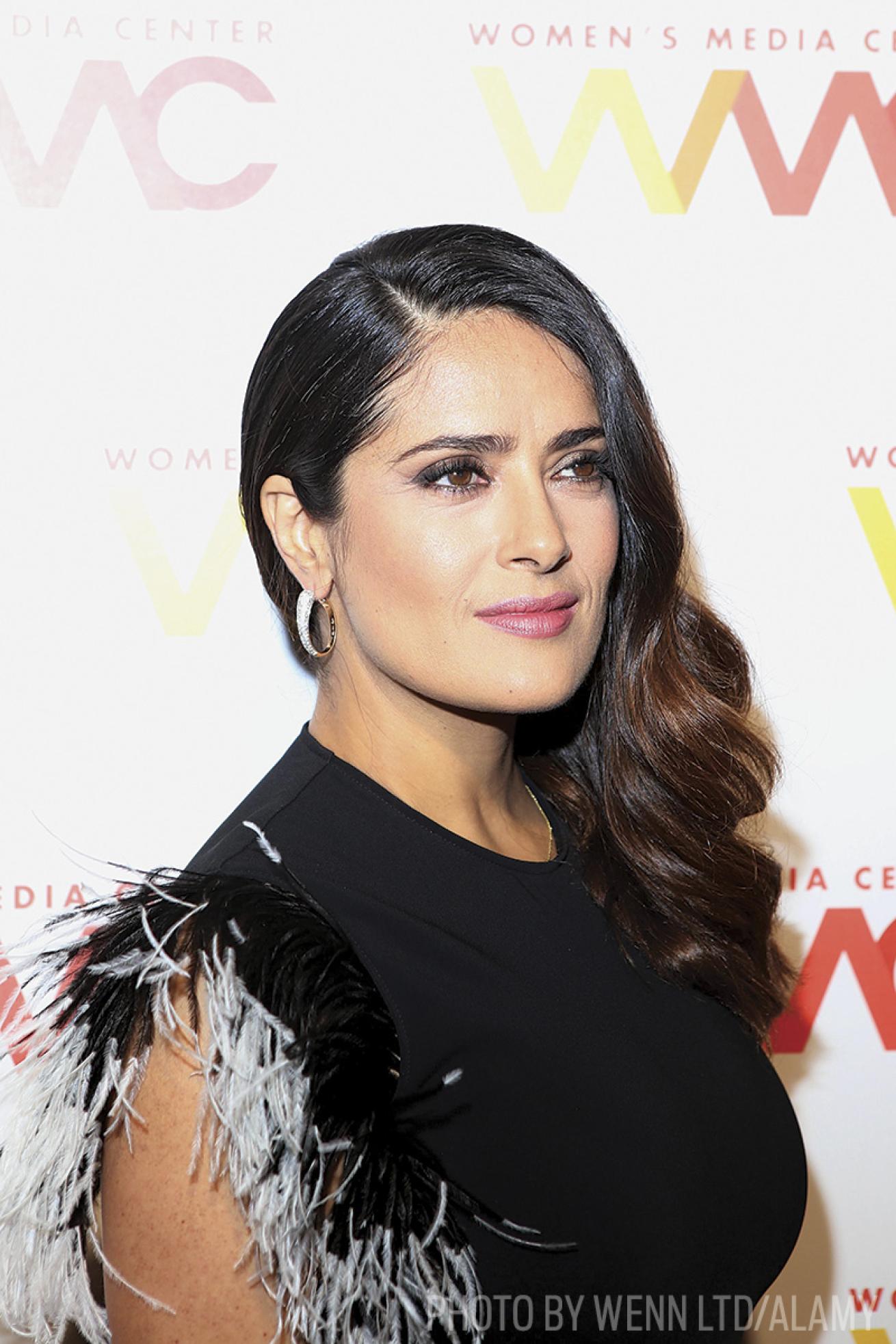
Wenn LTD/AlamySalma Hayek
The Mexican superstar earned a certification at Stuart Cove’s Dive Bahamas while filming After the Sunset on-site.
Tom Hanks

Wenn LTD/AlamyTom Hanks
The Oscar-winning actor spent time with Stuart Cove filming Splash, which featured scenes shot in the Bahamas.



